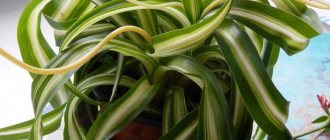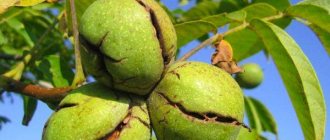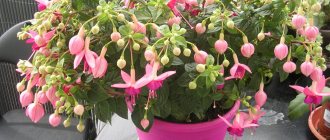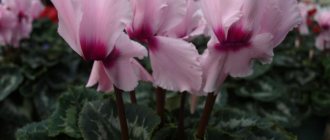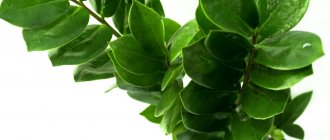Leaf diseases
Despite the high level of resistance to pests and most diseases, chlorophytum sometimes loses its decorative effect and even dies. The reason may be the owner ignoring basic maintenance rules or an attack by pests to which the flower is not immune.
These include:
The presence of problems or diseases of chlorophytum may be indicated by:
- pale green color;
- yellowing;
- loss of tugor;
- dying off of foliage;
- the appearance of spots of different colors.
Turn yellow
Yellowing is not always caused by a plant disease. More often this is due to a violation of the conditions of detention. Yellowing can be caused by:
- natural aging;
- lack or excess of moisture;
- mechanical damage to greenery;
- nutritional deficiency;
- incorrectly selected pot.
Old leaves turn yellow and dry out over time. This is a natural process that does not require treatment. It is enough to remove dying greenery. If the leaf is broken, it is not able to take in enough nutrients. This means that over time it turns yellow and dries out. This is also not a dangerous symptom. The damaged area is cut off, and the flower continues to develop fully.
If the leaves turn yellow because the flower is in a small pot, then you need to replant it. If there is a lack of nutrients, complex fertilizers are added to the soil.
Why do they turn pale?
The loss of decorative color and pale color of the crown are due to lack of lighting. Chlorophytum is a plant that loves diffused sunlight. If the crown has turned pale, just move the flower pot to the windowsill. You can also provide him with additional artificial lighting.
In case of severe loss of color you need to:
- moisten the earthen ball;
- feed the flower;
- Move to a well-lit place.
Reasons why it gets dark
The tips of the leaves darken from excess moisture. This happens especially often in winter. During this period, chlorophytum is at rest, its growth slows down. The roots lose their ability to absorb a lot of moisture and as a result begin to rot. The above-ground part reacts by darkening the greenery.
To get rid of the problem, you need:
- reduce watering to a minimum;
- provide the plant with an acceptable temperature;
- stop feeding;
- trim off darkened leaves.
The ends are drying out
Most often, in such cases, transplanting the flower into a more suitable soil helps. As well as timely feeding intended for decorative indoor plants.
Dry leaf tips can be caused by:
- long periods of time between waterings;
- lack of nutrients in the soil;
- excess salts;
- watering with unsettled hard water;
- frequent feeding with urea.
Treatment of plants at home
Before taking active steps to save the flower, it is necessary to understand the cause of the disease. Chlorophytum is resistant to most infections. Most often, the cause is a violation of the plant maintenance rules.
For effective treatment you need:
- determine the nature of the disease;
- eliminate the cause;
- provide proper care.
Depending on the cause, you can take the following steps:
- violation of the rules of care - provide the flower with normal lighting, watering and fertilizing;
- fungal diseases - change the soil, trim damaged roots, treat with fungicides;
- insects - remove pests mechanically (wash with soapy water), treat with insecticides.
Fertilizers and fertilizing for chlorophytum
Chlorophytum grows intensively from March to September; its dormant period is pronounced and occurs in winter, when the plant goes into hibernation. Therefore, it is better to start watering with fertilizers with the arrival of spring, adding mineral or organic fertilizers to the water. All about organic fertilizers. By the way, when it reaches adulthood, it blooms, producing stems with small white flowers at the ends! Therefore, during flowering, you can use fertilizer for flowering crops.
Chlorophytum is considered an unpretentious plant, adapts well to home conditions, has a decorative green mass, actively produces oxygen and purifies the air. The reasons why chlorophytum leaves turn yellow are different. To help an indoor flower, you need to understand the source of the disease.
Pests of chlorophytum
Insects that infect chlorophytum can be noticed by carefully examining the above-ground part. Based on external signs, you can easily determine the type of pest and determine what means to combat it.
The type of pest can be determined by the following characteristics:
- a grayish coating that looks like small pieces of cotton wool—mealybug;
- yellow stripes and dry spots - thrips;
- twisted, deformed leaves, on the back of which you can see small insects - aphids;
- the leaves are covered with dark spots, sticky to the touch - scale insects.
What to do when you appear?
First of all, it is necessary to isolate the infected flower from other plants. This will help prevent pests from spreading to neighboring flowers. The place where the chlorophytum stood is thoroughly treated with a soap solution. The above-ground part of the plant is also washed, mechanically removing pests. Then chlorophytum must be treated with insecticides.
When infested with mealybugs, use:
Thrips are destroyed with Actarofin. When chlorophytum is affected by aphids, treatment with Actellik helps. You can also spray the plant with a water infusion of tobacco leaves or garlic. Actellik will also help against scale insects. Rubbing the leaves with kerosene also works well.
Plant care
Chlorophytum is absolutely unpretentious in care. It rarely dies even when kept in an unsuitable environment. However, if the necessary conditions are created and careful care is taken, the flower will become more decorative. It will also acquire immunity to various infections.
The main requirements for chlorophytum are:
- The plant loves light. In good lighting, it forms a decorative crown with an original color. Also, chlorophytum needs regular spraying of the above-ground part and a constant temperature.
- In winter, it is better to place the pot near lighting lamps. This will not only provide additional illumination, but will also allow you to maintain an optimal temperature around (22-24 degrees).
- The plant must be replanted regularly, otherwise it will stop growing. The roots will take up the entire space of the pot and begin to rot. If chlorophytum is not transplanted in a timely manner, it may die.
When caring, you should avoid the main mistakes that lead to the disease:
- waterlogging of the soil;
- abundant watering at long intervals;
- severe drying of the earthen coma;
- irregular feeding;
- sudden changes in day and night temperatures;
- placing the pot in a draft.
Insufficient lighting
With a lack of light, the tips of chlorophytum leaves can also dry out. In this case, the leaves along their entire length first become pale green and then pale yellow.
Lack of light is especially common in winter , when daylight hours decrease and the plant lacks natural light.
In order for the color of the leaves to be restored, you need to move the flower pot to a more illuminated place, preferably not the windowsill of a south-facing window. You can organize artificial lighting using fluorescent lamps.
Did you like the article? Share it with your friends on social networks:
Chlorophytum pleases its owners with beautiful green foliage. However, this is only possible in a situation where the plant is healthy. What to do if the leaves of an indoor flower dry out?
Description of the plant
Chlorophytum flower is a herbaceous plant that currently grows in South America and Australia. The plant’s homeland is Australia, but in Russia the flower does not like hot climates and cannot withstand increased dryness indoors.
At the moment, there are about 250 species of this plant. In its regard, the following advantages and features of the flower can be distinguished:
The presented flower can be grown separately or used to create a composition.
Caring for chlorophytum
As mentioned above, the houseplant chlorophytum does not require intricate care, but at the same time it is difficult to tolerate mistakes. Therefore, the features of how to care for chlorophytum at home should be analyzed in detail.
Lighting
The plant in question is unpretentious in terms of lighting, but it grows better if it stands on the light side - it is better to install flowerpots on the windowsills of the western or eastern side.
When installing it on the north side, there is a lack of lighting, which provokes a loss of decorative function - the color changes for the worse, there is no flowering or layering.
Flowerpots should not be placed on south-facing windows.
Temperature
Errors in maintaining temperature do not lead to the death of the plant, but its meager appearance violates the integrity of the decorative composition.
Prevention measures
Preventative measures are very important. They help reduce the risk of various chlorophytum diseases. Lovers of indoor plants who are planning to add this plant to their collection or have it in their collection are advised to pay special attention to preventive measures.
- For a plant to grow well, it needs good soil. You should choose the right soil for this particular flower. When purchasing soil, it is better to give preference to a substrate that has neutral acidity. You should choose a substrate that allows water and air to pass through perfectly.
- To reduce the risk of various parasites appearing in the substrate, it is recommended to treat it before using it for planting or replanting. Thus, the soil can be calcined or treated in a water bath (depending on the type of soil substrate).
- An important preventive measure is compliance with all microclimate indicators. It is better to place the plant in a well-lit place, and also monitor the optimal temperature and humidity in the room. If for some reason the air in the room where the flower “lives” decreases, then it is recommended to think about the possibility of purchasing special home air humidifiers - humidifiers. Having such a device in a home where air humidity is reduced is a necessity, not a luxury.
- To keep the leaves and roots of the plant in good condition, you should not forget about regular watering. It is better to water the flower with water that has been previously settled.
- We should not forget about transplantation. Experts recommend carrying out this procedure only when necessary. Some (especially beginners) home plant lovers abuse replanting. This often leads to the fact that in the future the flowers begin to grow poorly due to damage to the root system. In order not to damage the plant, it should be replanted correctly - in compliance with special technology.
- Another important preventative measure is to conduct regular plant inspections. To do this, you need to inspect the leaves. During such a “home inspection” you should pay attention to the color and elasticity of the foliage. And also upon inspection you can notice pests and parasites on the leaves. If they have been detected, then there is no need to delay treatment. Delayed treatment can lead to the death of the flower.
About the propagation of chlorophytum
In theory, there are 3 possible methods for propagating chlorophytum, but in reality only 2 are used - division and propagation by daughter bushes.
Of the planted seedlings, no more than 40% of sprouts emerge.
Reproduction by division
If chlorophytum is already mature, it can be propagated by dividing the bush. This is easy to do - you just need to remove the entire root system from the pot, which will fill the entire volume. It is better to remove the roots from moist soil, so the flower is watered several hours before the procedure.
If possible, the removed flower is divided into several copies along with a lump of earth. A knife is used for this. Additionally, rotten areas must be removed before planting. The plant is simply planted in pots and covered tightly with soil.
Reproduction by daughter bushes
The daughter bushes play a more decorative role - they hang cutely on the stem, which, if possible, begins to bloom additionally in spring or summer. To propagate by bushes, you need to do the following:
If the daughter bush is large, it can be immediately planted in the soil, which is immediately moistened and the plant is cared for as usual.
Chlorophytum. Reproduction. Video:
About diseases and pests
If you properly care for chlorophytum, then diseases and pests will bypass them. However, you can often notice pests such as thrips, nematodes, aphids, spider mites and other creatures on the plant.
It is recommended to get rid of them by treating them with special insecticides. But the flower growers themselves do not resort to this - they simply transplant the plant into a new soil suitable for it, after clearing the roots and removing all damaged parts.
Next, the “place of residence” of the flowerpot is changed, the flower is exposed to additional devices to achieve an acceptable temperature and increase the humidity in the room. Often the actions presented help in solving the problem.
Also, when caring for chlorophytum, you can encounter diseases that spoil the appearance of the plant and the entire composition.
Other problems
The most common problem among gardeners is why the tips of the leaves of chlorophytum dry out. The problems presented are simply explained - the temperature regime is not maintained, and the air is not properly humidified.
Dry air is detrimental to a flower, so it is not recommended to place it near heating systems in winter.
When warm weather arrives, it is better to take the flowerpots out onto the balcony or veranda.
Additional problems with growing chlorophytum include:
The main problem of the flower is that with insufficient watering and poor lighting (or, conversely, with prolonged exposure to ultraviolet rays), it turns yellow and dries.
These fairly common troubles are explained by the lack of sufficient watering in the summer - many novice gardeners believe that the plant, according to assurances, is often not necessary to water.
Yes, the roots of chlorophytum absorb all the water and retain it for a week. But in the summer, increased temperatures lead to a lack of moisture - the leaves quickly take water from the roots. Therefore, you should water the flower more often so as not to run into trouble.
Problems from improper care
- drying out of the soil and low air humidity causes drying out
. They begin to dry out at the same time, although such symptoms are not dangerous for the plant. Take care of increasing the humidity level: spray with settled warm water and place a container with peat or wet sphagnum moss near the pot; - Overmoistening of the soil provokes the formation of a large number of leaves and children affected by various types of spotting
. The leaves become covered with brown spots and look painful. To eliminate the problem, reduce watering; - nutritional deficiency affects the condition of the leaves, they turn pale and lose turgor
. Fertilizers are applied once every two weeks, alternating mineral complexes and organic matter; - Excess fertilizer leads to the fact that the flower begins to “fatten” and is susceptible to disease. When feeding, observe the concentration indicated on the package;
Irregular replanting causes the plant to split the pot. The signal for replanting is the slowing down of flower growth and the protrusion of roots onto the surface of the soil.
.
Therefore, as it grows, a larger pot is selected and the soil is replaced, and replanted at the end of February - beginning of March;
Lack of lighting causes leaves to fall off, so the pot is placed in a sunny place with an air temperature of 22-23°C. In winter they are installed near fluorescent lamps.
Drying of the leaf tips of chlorophytum does not harm vital functions
plants. The danger comes from root rot or thrips. All other omissions in caring for a green pet can be easily eliminated, and then the plant will delight you for many years!
Which is very popular among amateur flower growers. It has gained such popularity due to its ease of care and beautiful appearance. However, flower growers often cannot understand why the tips of the leaves of chlorophytum dry out. Let's look into this issue.
In order for the flower to always remain fresh and healthy, it is necessary to provide it with minimal conditions for growth. Lighting and air humidity deserve special attention.
- Illumination.
Chlorophytum is a light-loving plant, and will feel quite comfortable in a room with sufficient lighting. However, it is worth considering that it is recommended to provide diffused light for it, otherwise direct sunlight, affecting the chlorophytum, will lead to sunburn, as a result of which the leaves will begin to dry at the edges. The problem can be resolved quite easily - you need to place the plant in a place where it is not exposed to sunlight.
Important!
Insufficient lighting levels can also cause the flower to turn yellow. If you do not have the opportunity to place it in a room with natural light, arrange artificial light sources for the chlorophytum.
- Humidity.
This indicator has a strong influence on the appearance. Chlorophytum does not tolerate extreme heat, so an environment with low humidity is not suitable for it. If the air in the apartment is dry, the tips of the plant also begin to dry out. To prevent this, the flower is regularly sprayed. If the leaves have already dried out, spraying water will help restore their former beauty.
If you want to understand why the tips of chlorophytum leaves dry out and what to do about it, you need to study the rules for caring for it before purchasing a plant.
Benefits for the home
Chlorophytum is good for the home and the health of its residents. Here we can highlight the following main useful properties:
1. Aesthetics - this plant is mainly purchased specifically to add comfort to a new interior. This can be done in several ways: place the flowerpot on the windowsill, in a special pot-rack, or simply hang it on the wall.
2. Fighting gas release - surprisingly, chlorophytum grows well in the kitchen. It will not only serve an aesthetic role, but will also absorb everything emitted by gas burners in the kitchen.
3. Oxygen release and air humidification - the plant itself perfectly releases oxygen and humidifies the air, so it is recommended to install it in children's rooms and bedrooms.
4. Elimination of harmful microbes - for proof, numerous studies have been carried out, which have led to the conclusion that chlorophytum can kill harmful microbes in the indoor air.
Additionally, you can plant geranium, which saturates the air with lemongrass oil vapor and prevents the development of colds.
5. Protection from dust - if chlorophytum is installed on the loggia in the summer, it will protect against dust from entering the apartment.
Feng Shui theories about the presence of plants in the house also sound surprising. It is claimed that the flower fights negative energy, which means it should be given to those couples and families in which conflicts often occur.
For example, if you give it to a workaholic who has already run his apartment, he will definitely reconsider his priorities and begin to devote more time to home.
Growing chlorophytum is easy if you immediately determine its correct location for permanent residence, and also create a suitable climate around it. To prevent the tips of the leaves from drying out, it is recommended to install a humidifier nearby - it will help maintain its appearance in the winter.
Did you like the article? Show it to your friends:
Causes
Chlorophytum is one of the plants that is quite easy to care for. Experts note that if the flower is cared for correctly, it pleases its owners with lush green leaves. If for some reason the conditions for growing a flower change, this can lead to the fact that it begins to grow worse. It is worth paying attention to the most common reasons.
- A fairly common reason that causes the leaves of this plant to turn yellow is a decrease in air humidity in the room. Dry air is usually a consequence of turning on heating appliances.
Many lovers of indoor plants note that chlorophytums usually dry only in winter, when the heating is on, and quite often yellowing and dryness are noted on the edges of the leaves.
- Incorrect temperature is another reason that can lead to changes in leaf color. If this indicator significantly exceeds +26 degrees, then the flower may begin to dry out. Such changes occur due to the fact that the plant, in unfavorable conditions for it, begins to actively evaporate moisture. This in turn leads to the cell membranes of the leaves being damaged. This is manifested by yellowing of the foliage.
- Insufficient supply of biologically active substances is another possible reason leading to plant damage. Experts note that if the soil for this indoor flower was initially selected incorrectly, then later in the active growing season it will not have enough necessary substances for good growth.
That is why experts recommend using special additives - fertilizing - in case of yellowing of chlorophytum leaves caused by insufficient supply of biologically active components.
- Untimely replanting of an adult plant can also cause its leaves to begin to dry out and even change their physiological color. The root system of a grown plant requires enough space. If the pot where the flower grows is too small for it, this can cause damage to the roots. It is recommended to replant this plant in the spring.
- Excessive and too frequent watering is another possible cause of leaf damage. An abundance of moisture in the soil substrate leads to damage to the roots. If the root apparatus is damaged, then the leaves are damaged. This usually manifests itself in the fact that the leaves begin to turn very yellow.
It is recommended to water the plant with water at room temperature. Too cold water can damage the root apparatus, so it is better not to use it for irrigation.
- Various parasites can lead to severe dryness of leaves and changes in their color. Various parasitic diseases can manifest themselves not only by yellowing of the foliage, but also by the appearance of various dark spots on the leaves. An unusual coating may also appear on the leaves.
Leaf diseases
Despite the high level of resistance to pests and most diseases, chlorophytum sometimes loses its decorative effect and even dies. The reason may be the owner ignoring basic maintenance rules or an attack by pests to which the flower is not immune.
These include:
The presence of problems or diseases of chlorophytum may be indicated by:
- pale green color;
- yellowing;
- loss of tugor;
- dying off of foliage;
- the appearance of spots of different colors.
Turn yellow
Yellowing is not always caused by a plant disease. More often this is due to a violation of the conditions of detention. Yellowing can be caused by:
- natural aging;
- lack or excess of moisture;
- mechanical damage to greenery;
- nutritional deficiency;
- incorrectly selected pot.
Old leaves turn yellow and dry out over time. This is a natural process that does not require treatment. It is enough to remove dying greenery. If the leaf is broken, it is not able to take in enough nutrients. This means that over time it turns yellow and dries out. This is also not a dangerous symptom. The damaged area is cut off, and the flower continues to develop fully.
Pests of chlorophytum
Insects that infect chlorophytum can be noticed by carefully examining the above-ground part. Based on external signs, you can easily determine the type of pest and determine what means to combat it.
The type of pest can be determined by the following characteristics:
- a grayish coating that looks like small pieces of cotton wool—mealybug;
- yellow stripes and dry spots - thrips;
- twisted, deformed leaves, on the back of which you can see small insects - aphids;
- the leaves are covered with dark spots, sticky to the touch - scale insects.
What to do when you appear?
First of all, it is necessary to isolate the infected flower from other plants. This will help prevent pests from spreading to neighboring flowers. The place where the chlorophytum stood is thoroughly treated with a soap solution. The above-ground part of the plant is also washed, mechanically removing pests. Then chlorophytum must be treated with insecticides.
When infested with mealybugs, use:
Thrips are destroyed with Actarofin. When chlorophytum is affected by aphids, treatment with Actellik helps. You can also spray the plant with a water infusion of tobacco leaves or garlic. Actellik will also help against scale insects. Rubbing the leaves with kerosene also works well.
Plant care
Chlorophytum is absolutely unpretentious in care. It rarely dies even when kept in an unsuitable environment. However, if the necessary conditions are created and careful care is taken, the flower will become more decorative. It will also acquire immunity to various infections.
The main requirements for chlorophytum are:
- The plant loves light. In good lighting, it forms a decorative crown with an original color. Also, chlorophytum needs regular spraying of the above-ground part and a constant temperature.
- In winter, it is better to place the pot near lighting lamps. This will not only provide additional illumination, but will also allow you to maintain an optimal temperature around (22-24 degrees).
- The plant must be replanted regularly, otherwise it will stop growing. The roots will take up the entire space of the pot and begin to rot. If chlorophytum is not transplanted in a timely manner, it may die.
When caring, you should avoid the main mistakes that lead to the disease:
- waterlogging of the soil;
- abundant watering at long intervals;
- severe drying of the earthen coma;
- irregular feeding;
- sudden changes in day and night temperatures;
- placing the pot in a draft.
Description and useful properties
Chlorophytum is an evergreen plant with elongated linear leaves collected in basal rosettes. As the flower grows, it forms a lush bush that looks great in group compositions, alone in hanging pots and on stands.
But the main advantage of chlorophytum is not its decorativeness - gardeners love it for its ease of cultivation and its ability to create a useful microclimate around it. Like an ordinary weed, it easily adapts to various conditions: it tolerates heat and coolness well, and is not afraid of temperature changes, drafts, or short-term drought.
Chlorophytum releases a lot of oxygen and special substances - phytoncides, which have the unique property of disinfecting the surrounding space. They neutralize toxic compounds - tobacco smoke, carbon monoxide, volatile formaldehyde emitted by plastic coatings and furniture.
Important! The appearance of the plant does not depend on the presence of harmful volatile impurities in the air, since it feeds on them. The main reason for yellowing leaves is errors in care.
Chlorophytum does not bloom, leaf tips dry out
What should you do if the tips of the leaves of chlorophytum dry out? Many both beginners and experienced flower growers ask a similar question. This plant is considered quite unpretentious; anyone can grow it indoors. But often even chlorophytums begin to get sick or react negatively to some environmental factors.
To eliminate yellow leaves, you need to find out the cause of the appearance.
Experts say that most of the reasons for the drying out of chlorophytum leaves lie precisely in improper care. But there are also some diseases that cause the leaves to begin to dry out at the ends. In other words, all reasons can be divided into 2 categories. The first is associated with improper care, and the second with damage to the plant by pests or viruses. All this should be considered in more detail.
Damage to aphids and scale insects
Often the tips of the leaves begin to dry when the plant is infected with white aphids or scale insects. Moreover, after some time they begin to deteriorate along their entire length and quickly fall off. To make sure that these pests are indeed the cause, you should carefully examine your plant.
If small white larvae are noticeable on the stem and leaves and can slowly move through the chlorophytum, then there is nothing to doubt. First of all, insects should be destroyed. Regular laundry soap helps very well in this case.
The soil should be covered with a plastic bag and the pot should be placed in a basin. You should thoroughly wash all leaves and stems with warm water and soap, and then rinse out of the shower. After the leaves have dried, you can put the flower in its original place. It is advisable to sprinkle the soil in the pot with black pepper, which will serve as an excellent preventive measure in the future.
If there are a lot of aphids on the plant, it is recommended to first treat the chlorophytum with a strong fungicide and only then wash and rinse with clean water. At the same time, make sure that the insects do not fall back into the pot.
Root rot
Sometimes yellowing of the tips of the leaves is a consequence of a serious disease of the root system of chlorophytum.
Root disease can cause the plant's leaves to turn yellow.
It is the lower leaves that begin to disappear: they not only dry out, but also turn black, and over time the whole plant turns yellow. Then you need to get the flower and examine the roots. If there are rotten ones, then measures must be taken. This indicates that root rot has developed in the soil.
During the treatment process, you should first wash the roots from the ground with warm water, and then cut off all rotten and dry parts with a knife. Immediately after this, you need to treat the cut areas with activated charcoal or charcoal and place the chlorophytum in clean water for a while.
As soon as young roots begin to appear, the plant should be transplanted into a new substrate. Before doing this, the flower pot must be treated with a manganese solution so that all bacteria are completely killed and no longer spoil the roots.
Root rot - causes of blackening of leaves
The rhizome of chlorophytum may suffer due to excess moisture and heavy soil. The plant often suffers in winter under the influence of cold air and dampness. A decrease in ambient temperature implies a decrease in humidity.
The appearance of root rot is invisible at first, but later the symptoms affect the above-ground part.
The leaves first turn yellow, become covered with spots, and may completely turn black and rot. Measures should be taken immediately, since the condition is dangerous for indoor plants. A bush infected with diseases can quickly die. For this reason, yellowing in winter requires urgent treatment.
Improper plant conditions
In addition to changes in the color of the aerial parts of chlorophytum, other symptoms are often observed. For example, a flower grows poorly due to growing in a small pot and a deficiency of basic nutrients. The tips of the leaves darken with insufficient watering, keeping in a room with dry air, or lack of spraying. In some cases, spots can cover the entire surface of the leaf, which often occurs due to diseases or damage to the root system.
When pests settle, only some shoots of chlorophytum wither and turn yellow. Treatment of diseases and the fight against insects must begin immediately, otherwise the bush will die.
Under what environmental conditions do chlorophytum leaf blades turn yellow:
- lack or excess of water in the ground and air;
- temperature violations;
- prolonged exposure to direct sunlight;
- lack of light;
- nutritional deficiency;
- drafts;
- lack of fresh air;
- infections and insects.
How to save chlorophytum from rotting
If you notice signs of damage to the root system, you must immediately take action. Treatment with chemicals will not have the desired effect if the roots are damaged. For this reason, it is necessary to transplant into a fresh, disinfected soil substrate.
. Usually the procedure for chlorophytum is done by transshipment, but in this case it is necessary to free the rhizome from the ground and cut off all damaged areas, capturing some healthy tissue.
If the root system is completely rotten, it will not be possible to save the bush.
For such plants, cuttings are recommended. In Chlorophytum curly, you can use the children formed on the sides. They take root quickly, so you don’t have to put them in water, but immediately plant them in individual cups. If the rhizome has healthy tissue left, then after pruning, treat it with a solution of a chemical preparation, sprinkle the damaged areas with crushed activated charcoal or charcoal. Plant the chlorophytum in a new pot, after removing the blackened leaves.
Why do Chlorophytum leaves turn yellow?
Chlorophytum is an evergreen shrub with long saber-shaped leaves.
This flower is very popular among flower growers, as it is absolutely unpretentious and does not require painstaking care.
As a weed, it thrives in both hot and cool conditions. Not afraid of drafts, drought, temperature changes.
Causes of yellowing and drying of leaves of chlorophytum
Almost always, drying and wilting of chlorophytum leaves are a consequence of errors in care:
If the aboveground part of the plant turns pale and then becomes light yellow, it means that the chlorophytum does not have enough lighting or the root system of the flower has grown greatly and the plant does not receive adequate nutrition.
If the lower leaves along their entire length become bright yellow, then the cause may be waterlogging of the soil and, as a consequence, rotting of the root system.
If the tips of the leaves dry out, this indicates insufficient soil moisture or too dry air.
Ways to solve yellowing of leaves in chlorophytum
Lack of light. This plant loves bright rooms. Usually the flower is placed closer to the windows. If chlorophytum does not have enough light, it immediately begins to lose its green color, its leaves turn yellow and become lethargic.
It is advisable to move the flower pot to a more illuminated place.
In winter, when there is not enough natural daylight, use artificial lighting sources,
Lack of nutrition. Chlorophytum needs to be fed throughout the year. In summer, fertilizers are applied frequently, about once a week, in winter less often - once a month,
Cramped pot. "Green Lily" grows quite quickly, especially with careful care. The root system of this flower is quite powerful, so the next time you replant, you need to take the container about 20-30% larger than the previous one in order to provide the roots with enough space to develop.
Watering chlorophytum
The plant prefers constant but moderate moisture. Watering should be done as the soil dries. In summer, 4 times a week, and in winter, depending on the temperature of the plant.
If the temperature does not decrease, then at the same pace. But if the temperature is lower, then you should water several times a week, making sure that there is no stagnation of moisture in the soil.
The plant is unpretentious to indoor air humidity, but it is necessary to spray and take a warm shower once every 30 days. You should not wipe the leaves from dust, since they are quite fragile on the plant.
Fertilizer for chlorophytum
Chlorophytum can be fed with fertilizer for decorative deciduous plants, organic fertilizers or universal fertilizers (“Rainbow”, “Ideal”). There are a lot of companies producing fertilizers. Go to a flower shop; as a rule, the packages will indicate what plants they can be used for. You can choose granular, executioner (“long-lasting”) and liquid fertilizers.
Chlorophytum transplant
Chlorophytum is replanted every year or two; the best time for this is considered to be February and March.
To replant, you need to take a substrate consisting of 1 part leaf soil, one part humus, sand and two parts turf soil. They need to be replanted in spacious flowerpots with good drainage at the bottom.
Chlorophytum reproduces by children and division, while the children are simply separated from the peduncle and take root in ordinary soil.
Chlorophytum needs pruning only when there is a need to remove damaged or diseased leaves, or you want to give the plant a certain shape; fertilizing is carried out only during the growing season twice a month with liquid fertilizers for decorative deciduous plants.
Reproduction of chlorophytum by lateral shoots
An equally common method for growing chlorophytum at home is the rooting of lateral shoots, the so-called children. This propagation method is simply simple.
In addition to beautiful leaves, adult chlorophytum also forms long stems of peduncles, on which daughter rosettes are formed, their appearance resembling the mother plant in “miniature”.
This mini bush is ready for planting in the ground immediately after being separated from the stem. But many experienced gardeners recommend first keeping the rosette in a glass of water for several days, and only after the roots become more pronounced, planting them in the ground.
The substrate for young plants is prepared in the same way as when dividing a bush. The peculiarity of this method of reproduction is that it is available at any time of the year.
Diseases and pests of chlorophytum
Chlorophytum can be affected by thrips (see photo above). To prevent the appearance and spread of this pest, it is necessary to maintain a sufficiently high air humidity around the plant and periodically inspect it.
If pests do appear, you need to cut off the affected leaves, dilute the insecticide against aphids according to the instructions, treat the plant, and then repeat the treatment four more times with an interval of 8 days. To prevent these pests from appearing, place several mothballs near the chlorophytum; the smell will repel thrips.
Improper watering
When caring for flowers, it is extremely important to pay attention to the intensity of watering. Many gardeners believe that it is better to water plants more often than to leave them without water. However, it is not. Some plants like more moisture, some less. Improper watering is often the answer to the question of why the tips of the leaves of indoor plants dry out.
Did you know?
- An excellent filter and air purifier. One flowerpot can neutralize 70–80 % of harmful impurities, and two flowers will cope with all pathogenic microflora in the kitchen or room.
Chlorophytum has large fleshy roots that perfectly retain moisture for a long time. But if the flower is not watered for a long time, it will quickly begin to dry out.
starting from the tips, and over time it will completely die.
In spring and summer, it is necessary to water chlorophytum as often as possible, and in winter, watering should be reduced. At high air temperatures, it is necessary to regularly spray the leaves with warm, settled water.


